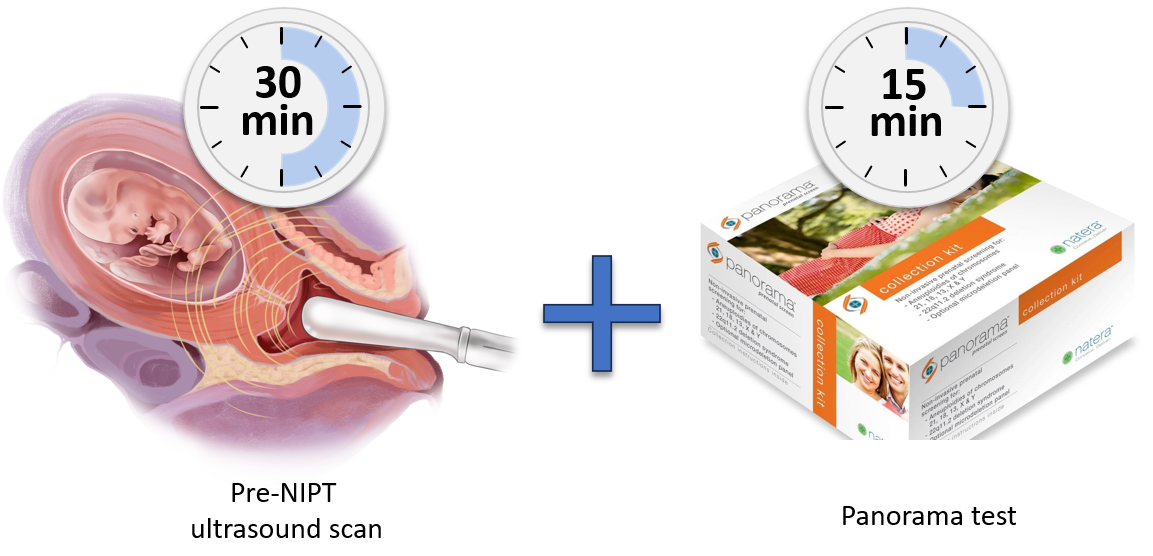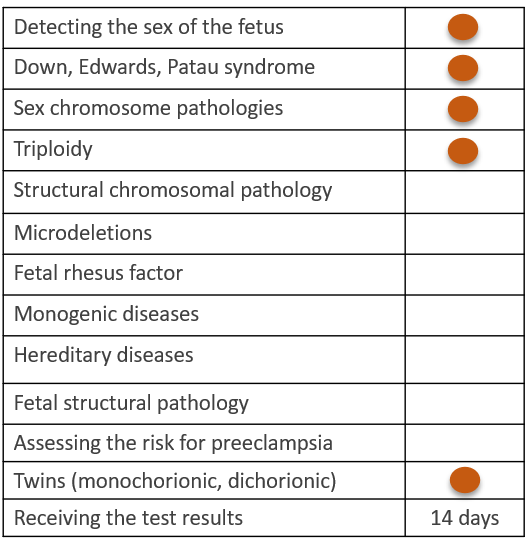Panorama test
The Panorama test is currently one of the most reliable DNA single nucleotide polymorphism-based safe and accurate chromosomal disease screening tests in the world, which can be performed from the ninth week of pregnancy and onwards. The Panorama test detects 99% of fetuses with Down, Edwards, Patau and Turner syndrome. Currently, Panorama is the only test in the world that can assess the presence of triploidy.
The incidence of chromosomal diseases depends on the age of the woman. The older the expectant mother, the greater the risk of carrying a child with chromosomal illness. Conventional NIPT tests are more sensitive in identifying chromosomal disorders in older women, and therefore there are more screening-negative results (meaning that the child is sick, but the NIPT test shows a low risk). The advantage of the Panorama test over other NIPT tests in particular is the fact that its sensitivity in recognizing chromosomal diseases does not depend on the age of the woman, and is equally good for both younger and older pregnant women.
The Panorama test can be used in women who are carrying both twins sharing one or two different placentas (mono- or dichorionic twins)
- For the Panorama test, only the mother's venous blood analysis is required.
- The Panorama test is carried out for those whose pregnancy has lasted for at least 9 full weeks (9 weeks + 0 days). If you would like to know the duration of your pregnancy, please visit our pregnancy calculator.
- With the test, it is also possible to find out the sex of the fetus if you wish. In the case of twins, it is possible to evaluate the gender of both twins separately. In the case of twins with two placentas, it is possible to assess their zygosity, that is, whether they are mono- or dizygous twins.
- The results for the Panorama test are received within 14 days of the blood test.
The price of the test include a very early ultrasound examination of fetal developmental defects.
Very early fetal developmental ultrasound with the NIPT tests is the most accurate combined prenatal screening method for the early detection of children with chromosomal diseases. The purpose of an ultrasound scan is to first determine the size of the pregnancy, to assess the presence and type of a possible multiple pregnancy, and then to exclude situations in which the NIPT test should not be performed. Since the NIPT test cannot detect structural developmental defects in a child, the objective of the ultrasound examination of very early developmental defects in the fetus is to exclude 10 severe developmental defects in the child.


